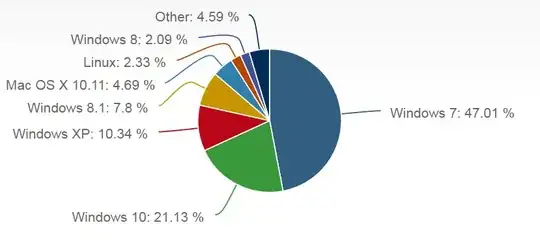Steam reports the following statistics for Windows 7 and 10 (they split 32 and 64 bit) for July 2016:
64-bit 32-bit Total
Windows 7 30.03% 6.30% 36.33%
Windows 10 44.67% 1.58% 46.25%
StatCounter shows Windows 7 at about 40% (daily variation of 37% to 42%) and Windows 10 at about 25% over that period.
It comes down to methodology - how are the stats collected?
Steam obviously gets their data from Steam users that allow their information to be shared to Steam - this introduces a bias to computers that have Steam installed. Many business owned computers will not have Steam installed, and these are more likely to not have upgraded to Windows 10.
I think it's interesting to look at StatCounter's daily values - you see dips in the Windows 7 market share at the weekends - indicating less browsing from the workplace in favour of more browsing from home.
NetworkMarketShare's methodology is explained in their FAQs:
We collect data from the browsers of site visitors to our exclusive on-demand network of HitsLink Analytics and SharePost clients. The network includes over 40,000 websites, and spans the globe. We ‘count’ unique visitors to our network sites, and only count one unique visit to each network site per day. This is part of our quality control process to prevent fraud, and ensure the most accurate portrayal of Internet usage market share. The data is compiled from approximately 160 million unique visits per month. The information published on www.netmarketshare.com is an aggregation of the data from this network of hosted website traffic statistics. In addition, we classify 430+ referral sources identified as search engines. Aggregate traffic referrals from these engines are summarized and reported monthly. The statistics for search engines include both organic and sponsored referrals.
StatCounter uses a similar method to NetworkMarketShare, but with a different population of websites.
Stats are based on aggregate data collected by StatCounter on a sample exceeding 15 billion pageviews per month collected from across the StatCounter network of more than 3 million websites. Stats are updated and made available every 4 hours, however are subject to quality assurance testing and revision for 14 days from publication.
Does Windows 7 make up almost 50% of the desktop operating system market share?
Maybe not quite 50% - but very likely somewhere between 40-50%.
 Is this analysis that the Windows 7, which is at least two releases out of date, still retains 47% of the desktop market share?
Is this analysis that the Windows 7, which is at least two releases out of date, still retains 47% of the desktop market share?